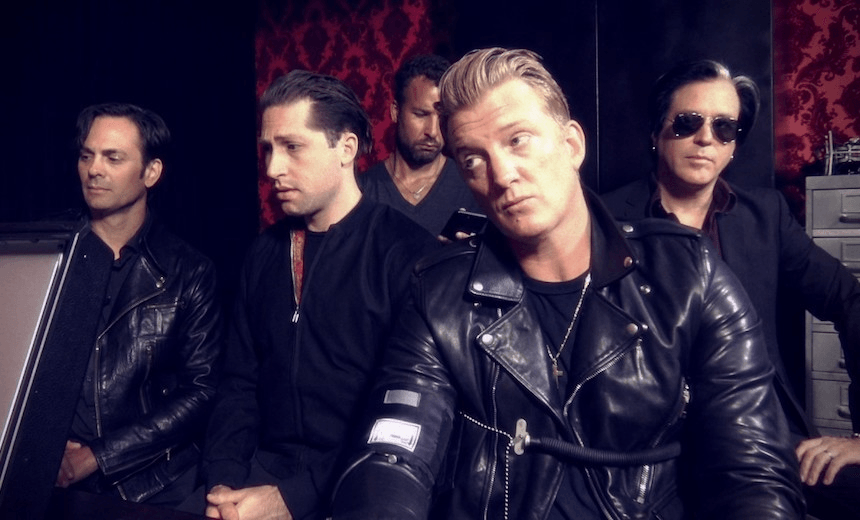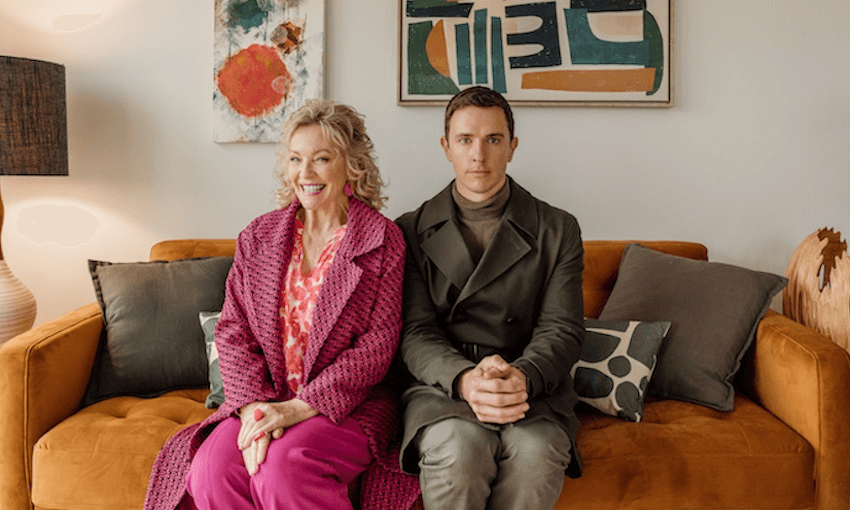Everyone loves a nostalgia trip, remembering a time when the world wasn’t melting so fast. Join Lucy Zee as she looks back at the white guys who once were on New Zealand TV way too much.
Imagine a world without white men.
Well for starters, New Zealand would have hardly any television commercials. My parents were very fresh Asian immigrants when they had me, and the only way I learned how to speak English before going to kindergarten was by watching TV.
TV back in the day wasn’t as diverse as it is now (or didn’t try as hard), so commercials were 99% white people with big white teeth, followed by more white people with even bigger and whiter teeth. As I got older, the flashy whiteness steadily got more mind numbing and much more obnoxious. I couldn’t tell if my TV was showing the same amount of whiteness it always had, or if I had simply become more aware of my racial identity and demanded more diversity. My entire life I had been raised by white men telling me what to buy, what to eat and how to eat it. Some ads worked, some didn’t, but I remembered all of them. Looking back on the past few years here is a list of the most memorable white men who tried sell me things I didn’t need.
Note: sliced white bread is bad.
The Mad Butcher
Peter Leitch quite possibly has the most famous voice in New Zealand, much louder than Guy Williams on Jono And Ben and more recognisable than Dame Kiri Te Kanawa. You’d be hard pressed to find a New Zealander unable, or even unwilling, to do an impression of the Mad Butcher. I can’t recall exactly when I saw my first Mad Butcher commercial but I can remember that milky pink face behind his brown stained spectacles on TV. He looked like Santa Claus if Santa Claus lived in Henderson and loved to knock back a few DBs every other night.
The Mad Butcher would scream into our TVs, letting us know the specials storewide. I did notice, however, that he never spoke about the extra things they sold – bulk paper towels, bland imported wafer treats and a huge range of expired marinades and sauces. Since his racism has come to light, the new commercials for the Mad Butcher don’t really feature him anymore, and instead feature a diverse range of Kiwis beaming about their local store.
How white? 5 out of 5 slices of white bread. You can’t get any whiter than telling a Māori woman that “Waiheke is a white man’s island.”
Mag and Turbo guy
I’ve mentioned the Mag and Turbo guy in my last Spinoff outing and I’m doing it again. I don’t know the name of the guy in this advert. I’ve googled it, I’ve half heartedly asked around, but he totally looks like your high school best friend’s hotter older brother – tall and tanned, with crunchy gelled hair.
I remember the first commercials, when he was energetic and had his lines memorised word for word. I feel like he was kind of flirting with the camera too. But as the years have gone by he’s become disinterested, sluggish and slightly less tanned, and if you look deep into his eyes you can see he knows that you know that he knows that no one on this earth needs spinning mags.
How white? 3 out of 5 slices of white bread.
Beaurepaires Man
Vince Martin was the model 80s Aussie bloke – blonde hair, blue eyes and a strong bum chin in the shape of NSW. Just pure white perfection. Not only did Vince Martin’s Ken doll-esque good looks make your mum weak at the knees, his voice also got her porridge stirring.
As a child I was always sceptical of his voice because it didn’t seem to match his face. And every time Christmas season rolled around, the lip syncing in the carol advert just added to my conspiracy theory that the actual voiceover was a guy was too ugly to put on TV so they replaced him with Vince Martin, who probably had a horrible creepy baby voice. But again, my 8-year-old imagination was smothered because it turns out Vince Martin is actually a professional jazz vocalist and working in New York as a singer.
How white? 2 out of 5 slices of white bread. At least he was trying to be sexy for your mum.
Energy Spot guy
I don’t think I’ve ever used the word ‘ironic’ correctly in a sentence before but is it ironic that the actor who played a god of cold and ice in a local Kiwi drama also happened to be the face for warm, dry, energy saving homes?
These were some upper-middle class commercials telling people to invest in long curtains and $5k heat pumps, not ads for a poor underpaid writer living in a damp flat on the outskirts of the city typing this article wearing three jumpers and a Beanie in bed because she can’t afford long curtains and a heat pump.
How white? 5 out of 5 slices of white bread for being out of touch with the rest of New Zealand.
Peter Elliott
If you had to have your life saved by any doctor who’s been on Shortland Street, which doctor would you choose? No, the answer is never TK Samuels, it’s not even Chris Warner in an emergency. The answer is Dr Kearney from the 1996 cast.
For all the slightly younger peeps, you might recognise Peter Elliott from the “Get Ready Get Thru” NZ Civil Defense campaign on TV years ago. Peter Elliott was chosen for the fact that he is a recognisable and trustworthy figure in New Zealand – a rare honour in this country. These exalted few are known as NZ Famous Royalty and they live on a higher plane than us mere ugly-folk (other members in the prestigious NZ Famous Royalty group include Lucy Lawless, John Campbell and the woman from the Food In A Minute ads).
Peter Elliott in these promos taught us to expect the unexpected, how to duck and cover during an earthquake, and how to pack an emergency kit for when disaster strikes. He really looked after us. He truly is the Daddy of the nation.
How white? 5 out of 5 organic, GMO free, 100% freshly milled, seeded, whole grain NZ wheat slices of bread. Only the good stuff.
So what did we learn? Even if you don’t watch TV anymore; even if you have an ad blocker on your browser; even if you stab your eyes out and block your ears; white guys are still out here trying to sell you something. If it’s not a tyre then it’s a dream. If it’s not a dream then it’s themselves.
The worst part of all this is that those “nostalgic” white men ads aren’t all that spectacular. They do the absolute minimum an advert needs to do. If something is forced down your throat enough – all day, every day throughout your entire childhood – you’ll probably start to enjoy it. But we need variety, we need flavour, we need more colour on our plates. Because having too much white bread just isn’t good for us.






